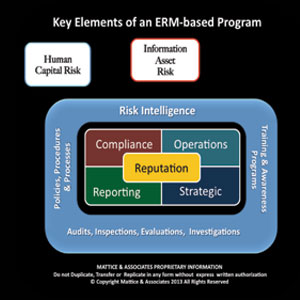How to Safeguard Your Information Assets
How are lapses in cyber security leading to the loss of billions of dollars worth of intellectual property?

|
In today’s “Internet of Everything,” most enterprises dramatically underestimate the extent and scope of cyber-based attacks. The U.S. Office of the National Counterintelligence Executive has indicated that no fewer than 140 countries, both “Friend and Foe,” are actively and aggressively stealing data from American companies and the government. The “60-Day Cyber Review” issued in February 2009 by the Obama administration estimated that in 2008 alone the United States lost intellectual property valued in excess of $1 trillion dollars just to cyber hacking. The non-partisan and non-profit National Economic Security Grid has frequently highlighted what they have coined as the “Advanced Persistent Asymmetrical Threat.” This asymmetrical threat includes not only cyber-based attacks, but also addresses the full scope of intelligence trade craft deployed to steal intellectual property from the U.S. private sector and intelligence from the government.
China is by far the most aggressive of the nation-state players when it comes to stealing technology. Unfortunately, in their drive to cash in on what were viewed as huge opportunities in China, most western companies implemented minimal information safeguards in their Chinese joint ventures.
One only has to look at the seven major sectors and 27 key technologies listed in the latest Chinese Five-Year Plan to see which industries the Chinese are currently intending to dominate. Of course, the estimated 200,000 plus Chinese PLA troops dedicated 24/7 to exploiting the Internet and hacking into every computer system and network they possibly can, do not in any manner limit tier exploits to just the seven sectors or 27 key technologies listed in the current Five-Year Plan.
On top of the aforementioned risks, we would be remiss if we did not address the “Insider Threat.” The Ponemon Institute conducted a study in 2007 of individuals that were being laid off from their companies due to the economic downturn. Fifty-nine percent of those surveyed admitted taking proprietary information as they were being laid off and, of those, 75 percent stated that they knew that their actions were in direct violation of company policy and did it anyway. The data taken in these thefts included such things as customer lists, pricing, new product designs, product roll-out schedules, strategic plans and trade secrets.
With the Edward Snowden affair, the NSA recently learned the hard way about what happens when rouge individuals with too much access and who can manipulate network systems steal highly sensitive information. IT systems administrators are given incredible levels of “Administrative Rights,” which allows them virtually unfettered access to manipulate systems and data. Ironically, most of these issues can be resolved through the deployment of “Digital Rights Management” (DRM) programs. DRM programs provide the ability to categorize data based on its level of importance, sensitivity and value to the enterprise. DRM programs also establish rules as to what each individual allowed access can do with the data. This is a huge advantage when sending sensitive data to a supply chain or joint venture partner, since the DRM program can not only prevent the loss of the data, but access can be denied at anytime that the originator deems appropriate. These programs can also prevent printing, copying, downloading, forwarding and altering the data.
The Securities and Exchange Commission has recently begun requiring publically held companies to report computer breaches in an attempt to assist investors in assessing the impact these losses have on the valuation of corporations. However, if you have ever read any of these disclosures, it is clear that their legal staffs have been working overtime and have crafted reports that are nearly impossible to decipher.
The only real question that remains is how many U.S. companies will have to evaporate before CEOs begin to take protection of information assets seriously and the government pulls its head out of the sand and begins to take these nation-state bad actors head on!
About the Authors:
Jerry J. Brennan is the founder and Chief Operating Officer of Security Management Resources (SMR Group), the world’s leading executive search firm exclusively focused in corporate security. Prior to founding SMR in 1997, Brennan enjoyed a 26-year career in domestic and international enterprise risk and security roles. Lynn Mattice is Managing Director of Mattice and Associates, a management consultancy focused at the development and alignment of Enterprise Risk Management and Business Intelligence Programs, as well as Intellectual Property Protection and Cybersecurity. He has more than 35 years of experience heading these programs at the executive level of three major multinational corporations and one mid-cap company in diverse industries.
Looking for a reprint of this article?
From high-res PDFs to custom plaques, order your copy today!







